Under the Skin: Effective Ways to Reduce Subcutaneous Fat
Understanding Subcutaneous Fat: The Layer Beneath Your Skin
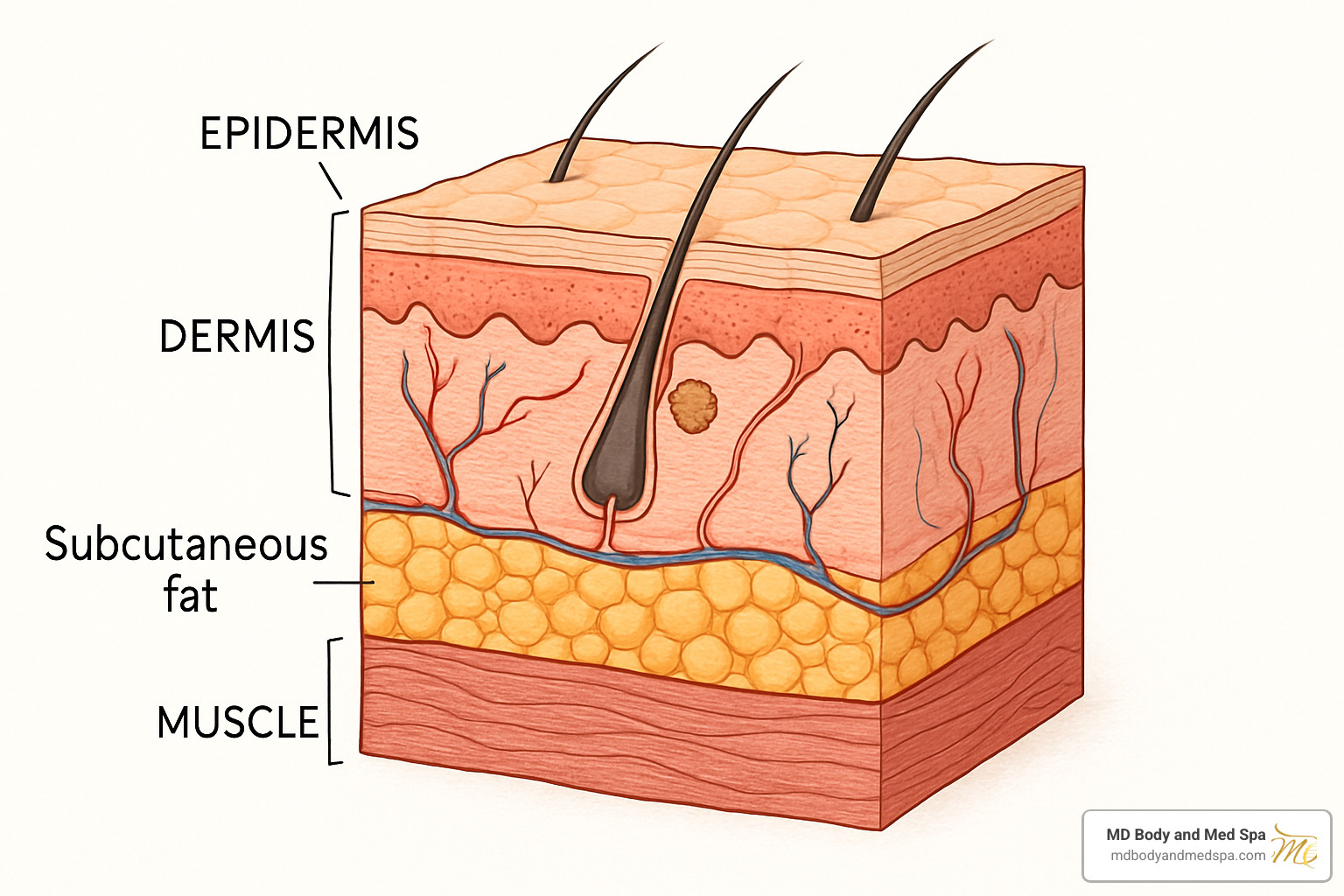
Subcutaneous fat is the soft, pinchable layer that sits directly under your skin. It accounts for roughly 90 % of total body fat and helps with energy storage, insulation, and cushioning. When it becomes excessive, however, it can change your appearance and often signals higher levels of the riskier visceral fat deeper inside the abdomen.
Below is a high-level roadmap for anyone asking how to get rid of subcutaneous fat:
- Maintain a moderate calorie deficit through balanced meals and sensible portions.
- Pair cardio with strength training to burn calories and build metabolism-boosting muscle.
- Sleep 7–8 hours and manage stress to keep fat-storing hormones in check.
- Explore professional treatments for isolated pockets that don’t respond to lifestyle changes.
I’m Rachel Stone, and after more than a decade in medical aesthetics, I’ve learned that long-term success comes from combining smart daily habits with state-of-the-art technology when necessary.
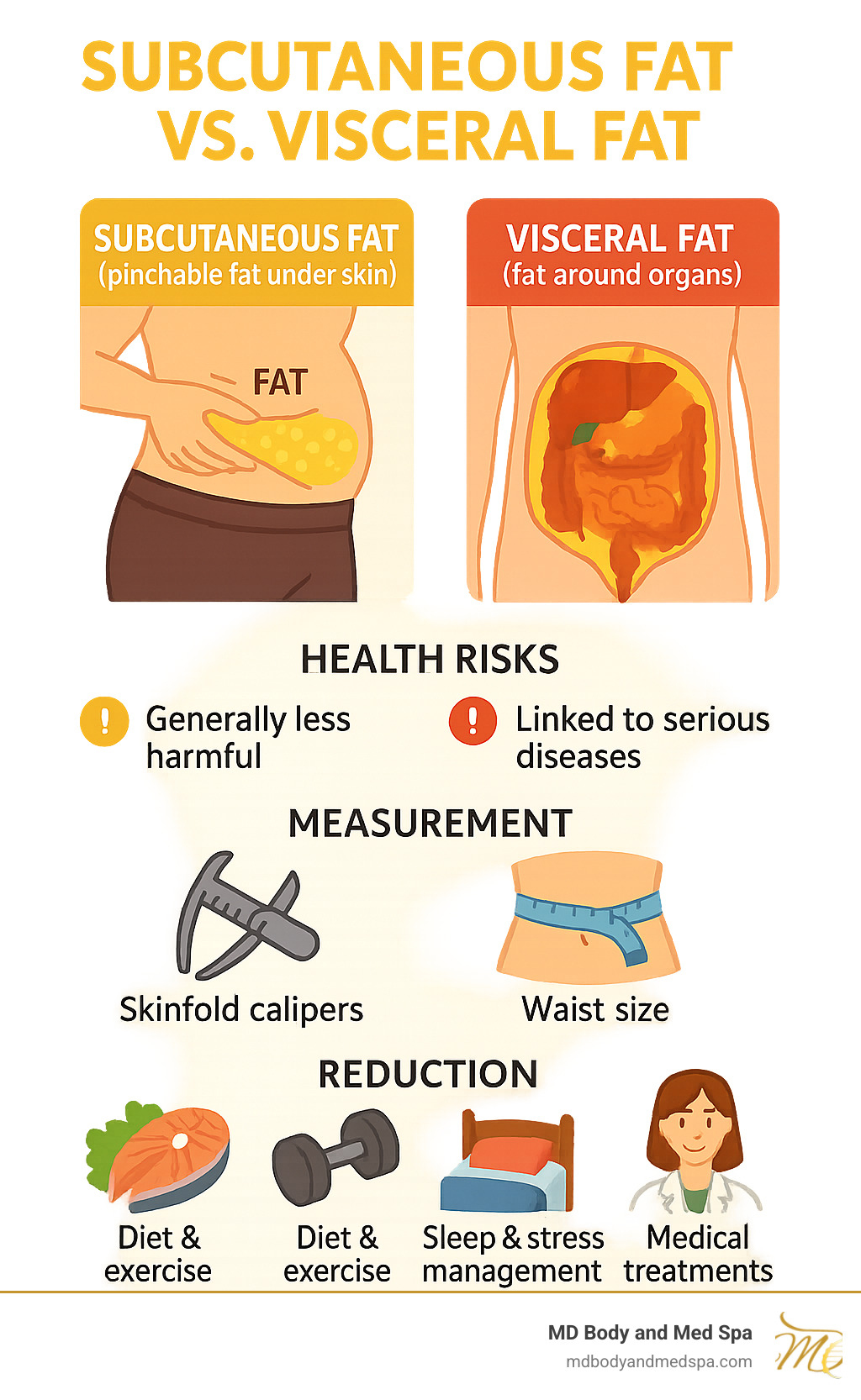
Understanding Subcutaneous Fat vs. Visceral Fat
To understand how to get rid of subcutaneous fat, it's important to distinguish it from visceral fat. These two types of fat have different locations, functions, and health implications.
| Aspect | Subcutaneous Fat | Visceral Fat |
|---|---|---|
| Location | Just beneath the skin | Deep inside abdomen, around organs |
| Appearance | Pinchable, visible | Hidden, not visible from outside |
| Health Risks | Lower risk when moderate | Higher risk - linked to heart disease, diabetes |
| Function | Insulation, protection, energy storage | Hormone production, organ protection |
| Reduction | Responds to diet and exercise | Responds faster to lifestyle changes |
Subcutaneous fat is the pinchable layer directly under your skin, commonly found on the hips, thighs, buttocks, and belly. It serves as your body's primary energy reserve and provides insulation.
Visceral fat is located deep within the abdomen, surrounding organs like the liver and intestines. You can't see it, but it's metabolically active, producing hormones and inflammatory substances that significantly impact your health.
Interestingly, research suggests that subcutaneous fat can play a protective role, as individuals with more subcutaneous fat relative to visceral fat tend to have better metabolic health.
What causes subcutaneous fat accumulation?
Several factors contribute to fat storage patterns:
- Genetics largely determine your body's fat storage patterns, such as whether you tend to be "pear-shaped" or "apple-shaped."
- Lifestyle factors are also key. A caloric surplus (eating more calories than you burn) is the primary driver of fat storage. A sedentary lifestyle and low muscle mass contribute by slowing your metabolism.
- Hormones play a significant role. Insulin resistance can cause your body to store glucose as fat. Cortisol, the stress hormone, increases appetite and promotes fat storage, especially around the abdomen.
How can I tell if I have too much subcutaneous fat?
You can use simple methods to estimate if you have excess subcutaneous fat:
- Body Mass Index (BMI): A BMI of 25-29.9 is considered overweight, and 30 or higher suggests obesity. However, BMI doesn't differentiate between fat and muscle.
- Waist Circumference: A waist size over 35 inches for women or 40 inches for men suggests higher health risks. A waist-to-height ratio over 0.5 is also an indicator.
- Pinch Test: If you can pinch more than an inch of fat on your abdomen or thighs, you likely have excess subcutaneous fat. It's a simple way to track progress.
Some subcutaneous fat is normal and healthy. The goal is not to eliminate it but to maintain a healthy amount.
Why Is Subcutaneous Fat So Hard to Lose?
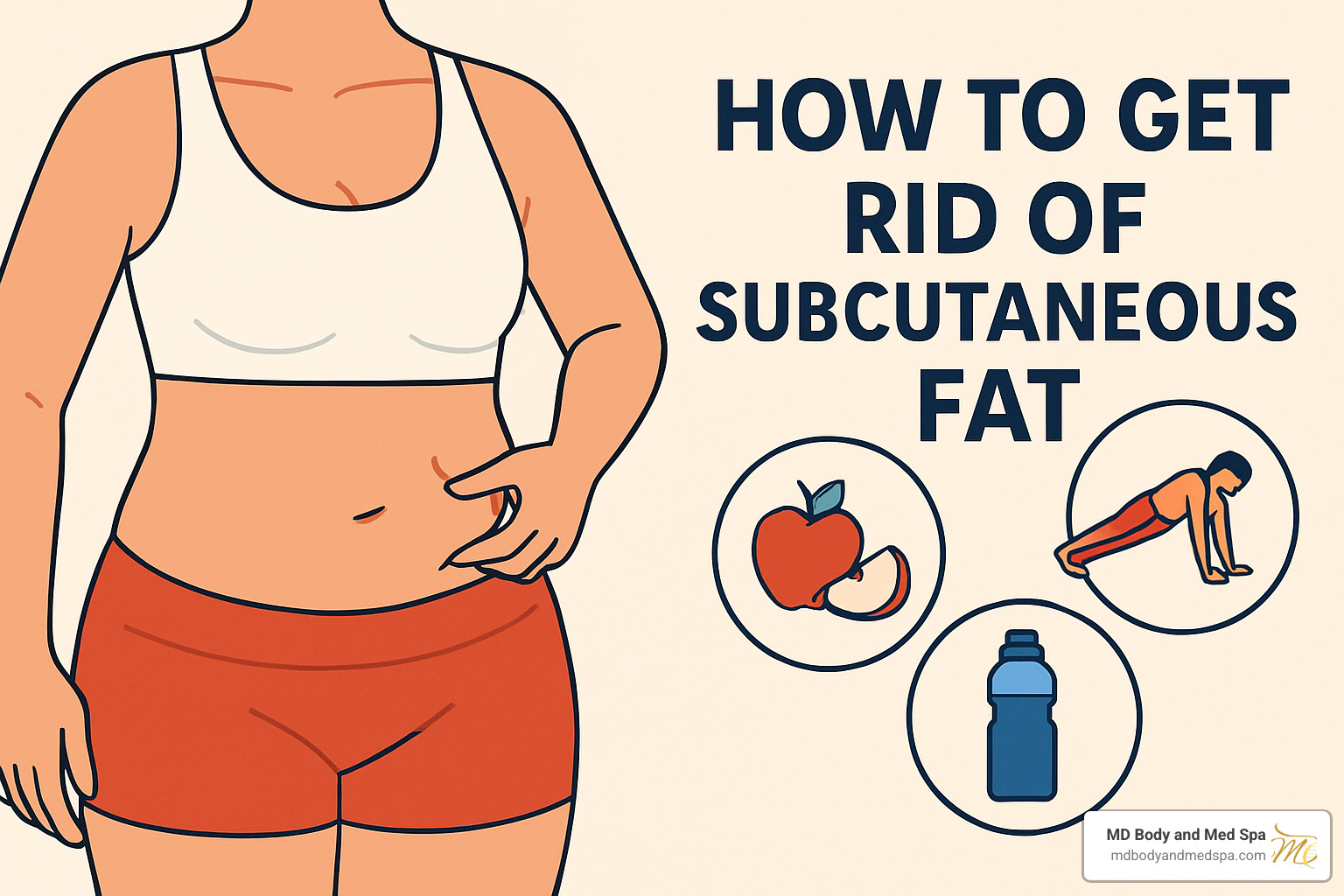
From an evolutionary standpoint, your body wants to keep subcutaneous fat as a backup energy source. Several modern-day factors make that ancient survival system even stickier:
- Cortisol released during chronic stress shouts “store fat!”—especially around the midsection. This stress hormone not only increases your appetite for sugary, high-fat foods but also promotes the maturation of fat cells, making it easier for your body to accumulate stubborn fat.
- Insulin resistance locks fat away instead of letting you burn it. When your cells don't respond properly to insulin, your pancreas overcompensates by producing more. These chronically high insulin levels signal your body to store incoming energy as fat and actively prevent the breakdown of existing fat stores.
- Genetics and age influence where you store fat and how quickly you lose it; metabolism drops 2–3 % per decade after 30. Hormonal shifts, such as declining estrogen during menopause, can also cause a redistribution of fat from the hips and thighs to the abdomen, making belly fat a new challenge for many.
- Low-grade inflammation from poor sleep, processed food, or inactivity slows everything down. This chronic, systemic inflammation can interfere with the hormones that regulate metabolism and appetite, such as leptin and ghrelin, disrupting your body's ability to recognize fullness and burn energy efficiently.
When you create a calorie deficit, the body typically mobilizes visceral fat first, then reaches the pinchable layer. So progress is happening even when the mirror hasn’t caught up yet.
For more detail on breaking plateaus, see our guide on how to get rid of body fat.
How to Get Rid of Subcutaneous Fat: A Lifestyle Approach
Real change comes from repeatable habits, not heroic bursts of effort. Focus on steps you can maintain for months—not days.
Eat for a Gentle Calorie Deficit
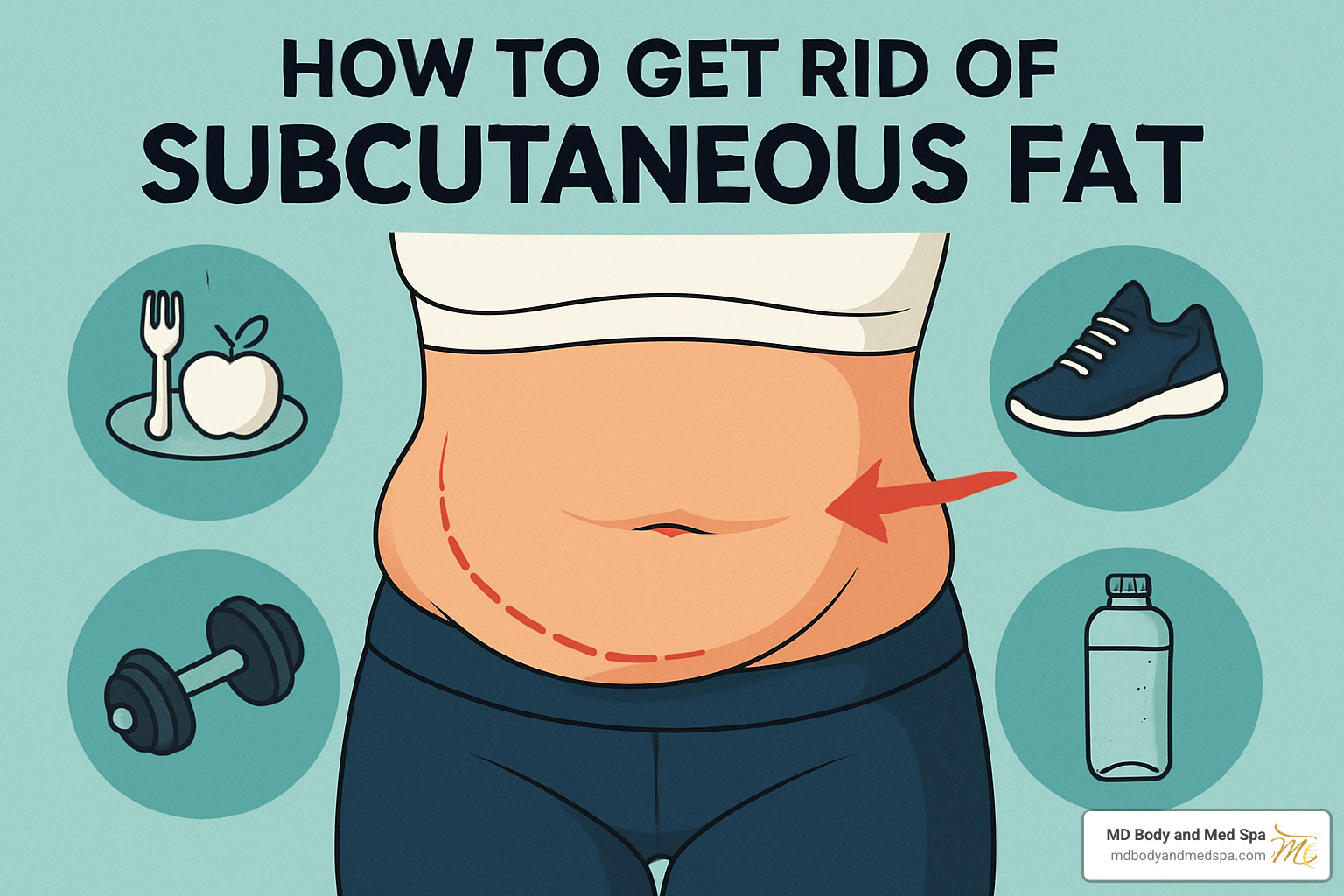
- Trim 200–400 calories below maintenance—enough to lose 1–2 lb per week without triggering starvation signals.
- Prioritize lean protein (0.8–1 g per pound of body weight) and fiber-rich produce to stay full.
- Include healthy fats (avocado, nuts, olive oil) for hormones and satiety.
- Limit added sugars and heavily processed foods; stay well-hydrated.
Combine Cardio, Lifting, and HIIT
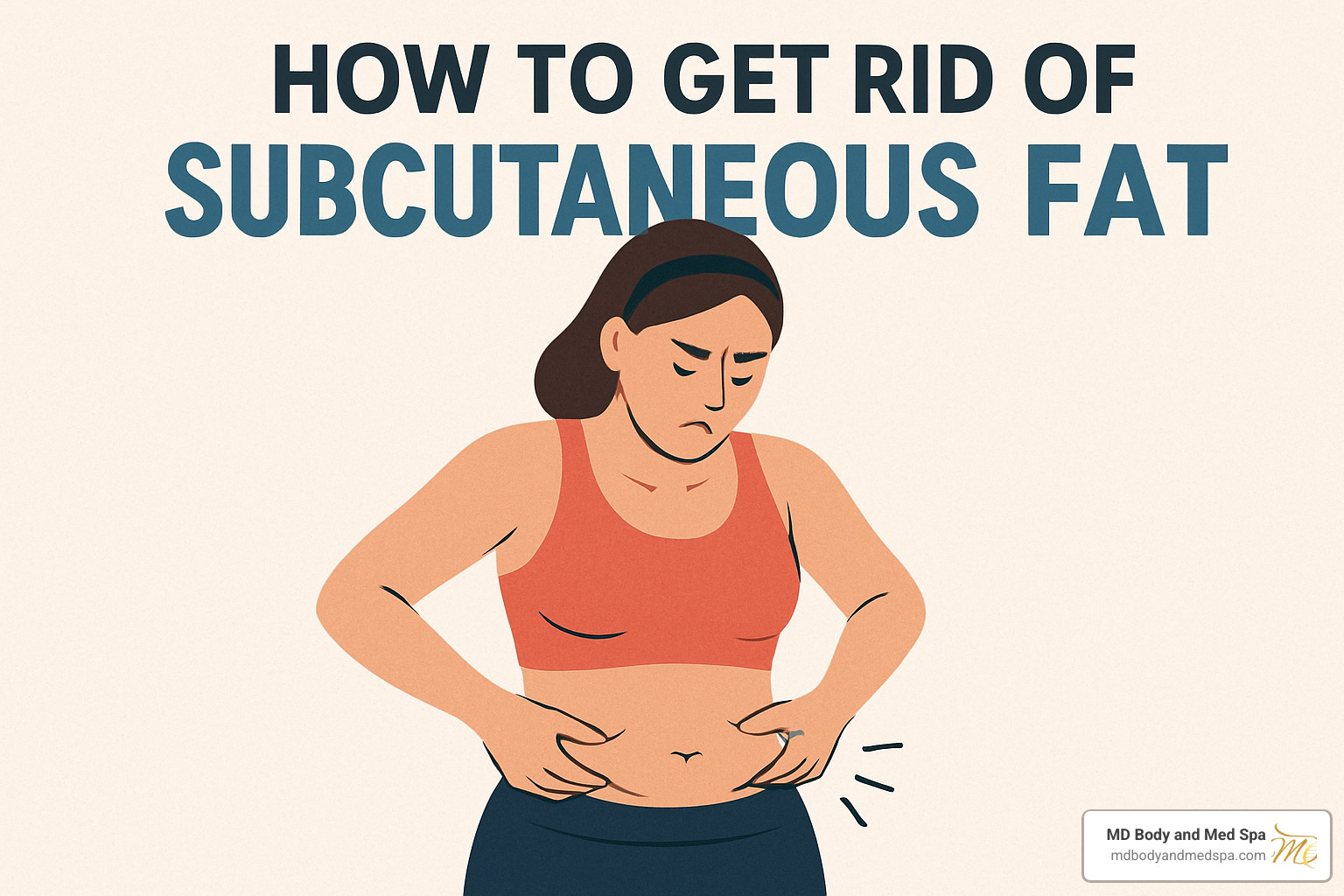
- Cardio: 150 min of moderate or 75 min of vigorous activity weekly.
- Strength: 2–3 total-body sessions; each pound of muscle burns several extra calories daily.
- HIIT: Short bursts (e.g., 30 s all-out, 90 s easy) boost post-workout calorie burn and are proven effective.
Sleep & Stress Management
Poor sleep lifts ghrelin, lowers leptin, and spikes cortisol, all of which encourage fat storage. Aim for 7–8 hours nightly. Counter daily stress with meditation, deep breathing, or a walk outside—simple practices that keep hormones working for you, not against you.
Debunking Common Myths and Mistakes
- Spot reduction: Crunches won’t melt belly fat; only overall fat loss or targeted procedures can change a specific area.
- Fad diets: Extreme restriction often sacrifices muscle and slows metabolism, leading to rebound weight gain.
- More is better: Over-exercising without rest lifts cortisol and stalls progress.
- Skipping weights: Strength training is essential for a higher resting metabolic rate—women won’t “bulk up.”
- Inconsistency & unrealistic timelines: Sustainable loss is 1–2 lb per week; anything faster usually rebounds.
Advanced Options: The Role of Cosmetic Procedures
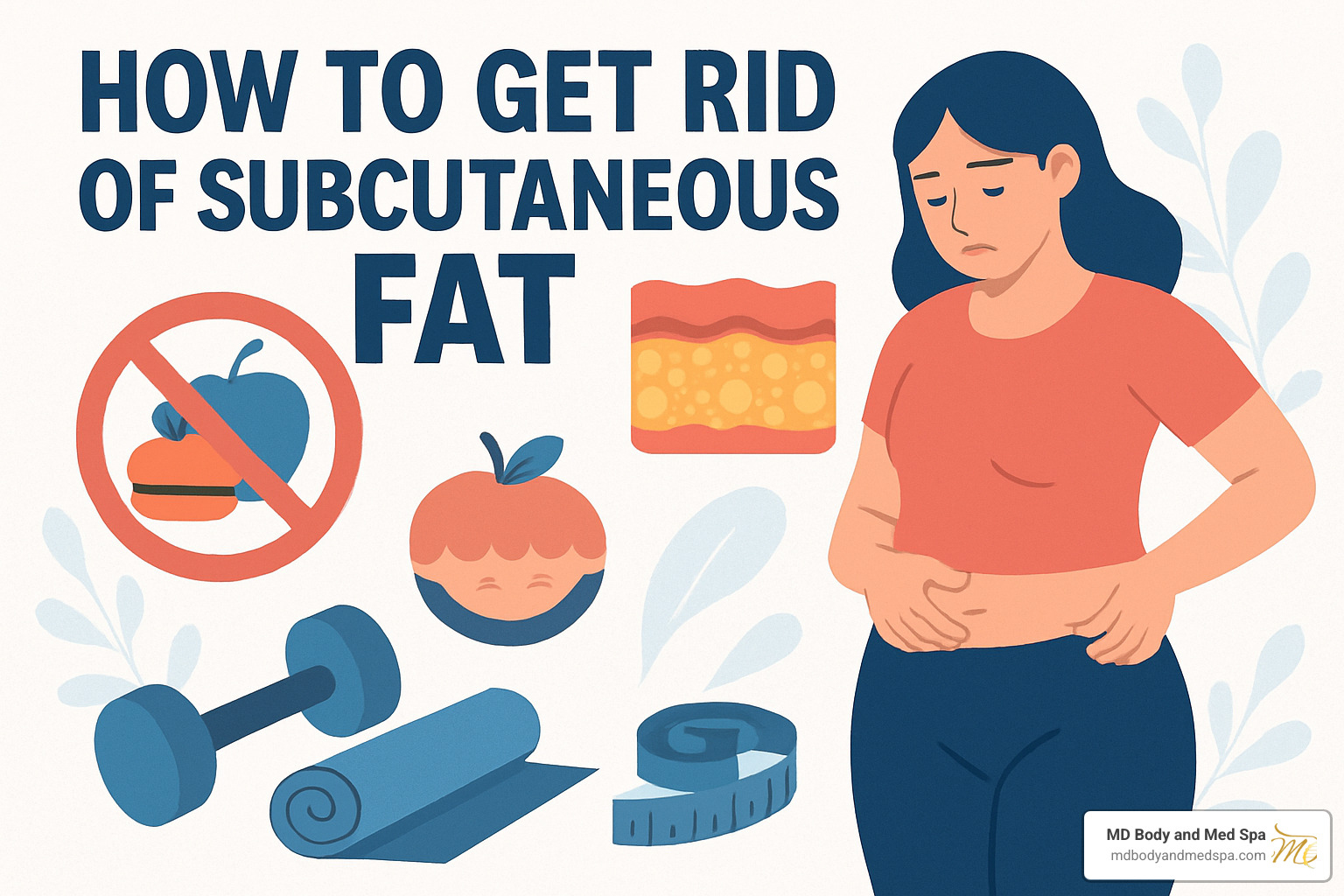
When diligent diet and exercise leave behind a few persistent bulges, technology can help. MD Body and Med Spa offers several non-surgical body-contouring options that permanently reduce fat cells in selected areas without the need for incisions or lengthy recovery periods:
- Cryolipolysis (fat freezing): This popular treatment delivers controlled cooling to target and crystallize subcutaneous fat cells, triggering a natural process of cell death called apoptosis. Over the following weeks and months, your body’s lymphatic system naturally processes and eliminates these dead cells, resulting in up to 25% fat reduction per session in the treated area.
- Radiofrequency: This technology uses RF energy to gently and safely heat the deeper layers of skin and fat. This thermal energy damages fat cells, causing them to shrink, while also triggering a powerful collagen-remodeling process. The result is not only fat reduction but also noticeable skin tightening, making it ideal for areas where skin laxity is also a concern.
- Injectable deoxycholic acid: Best suited for small, well-defined pockets of fat like a double chin, this treatment uses a synthetic form of a substance your body naturally produces to break down dietary fat. When injected, it destroys the cell membranes of fat cells, which are then cleared away by the body.
Candidates should be near their goal weight, live a healthy lifestyle, and have realistic expectations. A personalized consultation is the first step to determine which treatment is right for you. Learn more on our Fat Reduction Services page or see whether tummy fat freezing fits your goals.
Frequently Asked Questions about Subcutaneous Fat
Can you target fat in one spot?
Not with diet or exercise alone—your body chooses where to pull energy. Procedures like cryolipolysis are the only way to selectively shrink a specific bulge.
How long until I see results?
With consistent habits, many people notice looser-fitting clothes in 2–4 weeks and visible changes within 6–8 weeks. Expect 1–2 lb of total weight loss per week as a healthy pace.
Which is riskier—subcutaneous or visceral fat?
Visceral fat (around organs) is far more closely linked to heart disease, diabetes, and metabolic syndrome. Excess subcutaneous fat is less dangerous but often mirrors high visceral levels. Reducing overall body fat trims both.
Conclusion
The roadmap to less subcutaneous fat is straightforward, if not always easy:
- Moderate calorie deficit built on nutrient-dense foods
- Cardio plus strength training for maximal calorie burn and muscle retention
- Quality sleep and stress control to keep fat-storing hormones low
Spot reduction through exercise doesn’t exist, but professional body-contouring can finish the job when lifestyle changes plateau. MD Body and Med Spa serves Greenwood Village, Denver, and neighboring communities with advanced, personalized treatments that pick up where healthy habits leave off.
Ready for the next step? Explore our Body Sculpting Services and schedule a consultation today.
